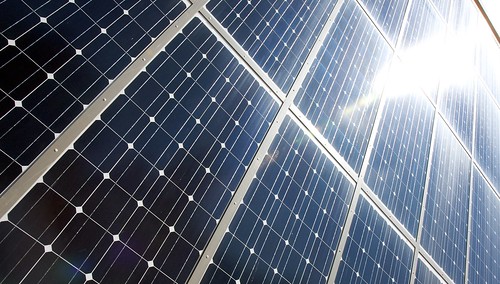Sustainability may seem more like a buzz-word than an actual concept or way of doing business. Words like green, sustainable, renewable, earth-friendly, etc. have become taglines that lead to varying reactions by different people. I often talk with people that believe that sustainability in business, economic development, and energy production are just passing fads. They are unaware of the impact, influence, and prominence of these concepts in the world. So how big is sustainability anyway? The following are some simple facts about the growth of the sustainability movement in various forms.
 |
| LEED in the World USGBC |
Renewable energy sources account for almost 20% of global energy production. Obviously, some countries are doing more than others. The following countries and regions are the top ten renewable energy producers in the world (ordered from highest producer to lowest): China, EU, USA, Brazil, Canada, Russia, India, Germany, Norway, Japan, and Spain. The amount of renewable energy produced is growing rapidly.
Wind capacity has grown by over 25% annually for the last five years. It’s hard to drive anywhere (at least in the western US, but I imagine elsewhere as well), without seeing huge wind farms. With the technology improvements, and costs decreasing, wind power is becoming more and more profitable.
Solar power production has grown 50% annually for the last five years. This rapid growth, again, is due in large part to the decreasing cost of production and installation of solar panels. Panels are also becoming ever more efficient in their energy production.
 |
| Flickr. |
Biofuel (including ethanol and biodiesel) production has increased by 20% annually for the last ten years. For some countries, this is nothing new. I lived in Brazil for a couple of years between 2004 and 2006. I was surprised to find that ethanol was not only common, but in certain areas, used more often than petroleum fuel in cars, buses and trucks. Several decades ago, when many parts of the world were uncovering petroleum oil deposits, Brazil was unable to discover any within their borders. Rather than become dependent on other countries for their energy needs, Brazil invested heavily in the research and production of sugarcane ethanol. Today, the industry is booming and provides a large quantity of the fuel that is consumed in the country and exported outside its borders.
Sustainability in construction and energy production are more than theoretical concepts, they are here to stay. In a lot of cases, people are unaware of the rapid growth of sustainability that is occurring in construction and energy production as it is happening behind the scenes. We still have a long way to go but I am optimistic that given the current trends and projected growth, eventually sustainability will cease to feel like a buzz-word and become an everyday way of life.



